airasia flew my char kuey teow order from Penang to KL on the same day, here’s my verdict
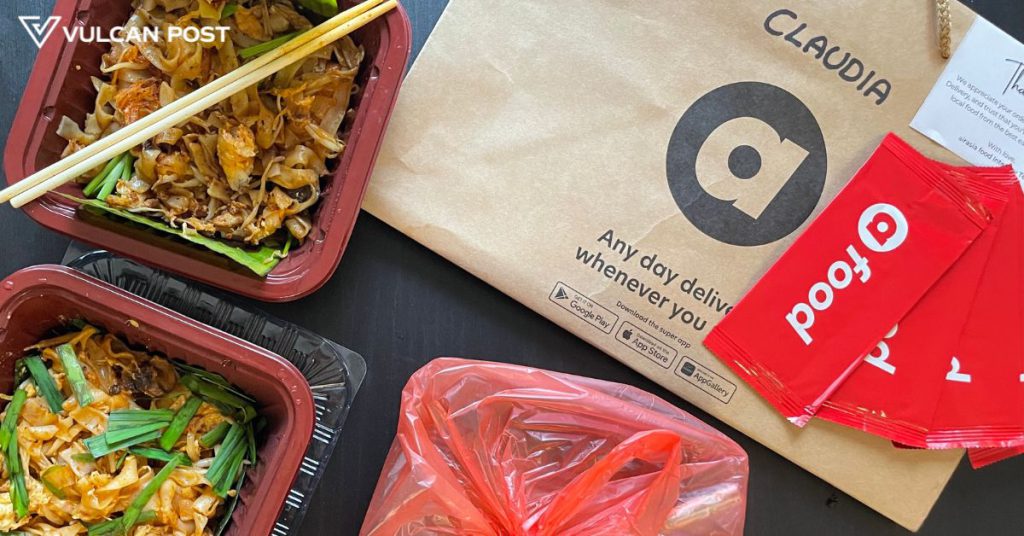
On Monday, August 15, airasia launched its intercity food delivery service. In a panicked frenzy, I immediately placed an order for Wednesday, August 17, the soonest option available.
If you haven’t heard, airasia’s food delivery arm is now offering Klang Valley residents the opportunity to order food from Penang, with deliveries made every Wednesday.
We’re not talking about frozen or dry foods, either. These are warm meals cooked in Penang and delivered on the same day to your doorstep.

I don’t know about you, but when I think of Penang, I think of char kuey teow. So, I pre-ordered a bundle of three duck egg char kuey teows (the lowest amount I could go) from Tiger Char Koay Teow.
The only time slot I could choose was 5 to 5.30 PM. This time range seems to be the sole option airasia is offering for now, which makes sense, since the food is cooked the day of the delivery.
Our office address in USJ didn’t work for some reason, so I set for the food to be delivered to my apartment in KL. Here’s how the whole experience went.
Not unreasonable prices
While the intercity delivery fee is only RM3, there’s also another fee of RM2.99 that’s counted as the delivery fee. In my opinion, RM5.99 per order is actually not bad at all. After all, orders within the Klang Valley can easily match that or even beat it.

The whole order cost me a total of RM50.09. The bundle of three was priced RM44.10, which makes each dish cost RM14.7.
A little bit expensive for some char kuey teow, I’ll admit, but it’s served with duck eggs and also some prawns, so I’m not too mad about it.
To make the deliveries worthwhile, only bundle options are available. Meaning no, you can’t just order one plate of char kuey teow from Penang.
This might be one of the biggest downsides of the service, because what on earth am I going to do with a bundle of three char kuey teows? Of course, if you have friends or family members, this would make sense, but for those living alone, you’re going to be eating the same dish for the next few days.
Becoming an early adopter for airasia food
One problem I have with airasia is I can never find my actual street address in their location search bar. So, I messaged AVA, AKA the AirAsia Virtual Allstar, to troubleshoot the issue.
Midway through, I received a call. It was an unknown number, but seemed legit enough so I picked it up.
The person on the other line introduced themselves to me as a representative of airasia food, and said that they’d like to interview me regarding the intercity order since I’m part of the first batch of customers they’re serving.
Excitedly, I agreed. I did not know then what I signed up for.

On the day of the delivery, I first got a call from my rider at 5.03PM. He said he was 10 to 15 minutes away. Four minutes later, I received another call, but from a different number.
Turns out, it was the representative from airasia. They announced that they were in my apartment lobby, and would like to talk to me and film some content.
I was a little surprised, but since they were already in my apartment lobby, I agreed with the plan.
While waiting for the rider, the representative shared briefly how the intercity delivery works. First, riders will go around Penang picking up the food, which then gets put into the cargo section on a passenger flight.
From our conversation, it seems like the food gets packaged into secure boxes labelled “fragile”. Once it arrives at the airport, the food is apparently picked up by riders who directly bring it to customers.
This information differs from what I was shown on the airasia app, which seems to show that the rider is coming from KL Sentral. But the app could be wrong because my rider’s plate number was listed as “Test 123” on the app too, which I can assure was not true.
The airasia food representative also shared that the merchants partaking in this service currently are lesser-known names, because famous stalls in Penang simply don’t have the time to prepare bundles for airasia.
However, airasia is calling for more Penang merchants to join the programme, so hopefully down the road, customers will be able to have more options.
And perhaps if this model proves to be rather beneficial for merchants, we might see the bigger names start to trickle into the service.
On-time and well-packed
One of the main questions we had about this service was how fresh the food would be, and how securely packaged it had to be.

By the time it got to me, the food was already repackaged into a nice brown paper bag from airasia (that ended up a little wet because it was raining). The bag also came with a cute thank you note from airasia. Each item was individually packed into a plastic bag.
I was actually shocked to find that the bottom of each dish was still quite warm. Now, this could be due to the heat of the rider’s vehicle, the way the food was flown over, or even due to the airasia team reheating it upon arrival.
Disclaimer: I don’t actually know the ins and outs of how airasia’s intercity food delivery works, so these are all just assumptions for now.
Unpacking the food, I noted that everything had been contained properly, with no leaks or breakages, though some condensation had built up in the containers (which is nothing unusual).
There were also a couple of airasia wet wipes packed inside the paper bag, a thoughtful touch for anyone who might be eating on the go.
Each dish was packaged in a plastic container, with a rubber band tying it together. There were no other seals on the container, which was surprising, but it could’ve already been removed by the airasia food team.

Time for a taste-test
My first impression of the actual food was that the char kuey teow looked appetising (though my colleague said I could’ve just been hungry).
There weren’t any strong smells, and the noodles were kind of sticking together, but that’s quite normal for char kuey teow.
There was also a fragrant banana leaf placed into each container which made the food seem all the more presentable and appealing.

As for how the food tasted, it wasn’t exceptional, per se, but it was definitely good. The prawns tasted fresh and the noodles had a nice chewy texture. The duck eggs were a bit dry, but still rich with flavour.
In short, the food was… nice. It was delicious, in fact. If I hadn’t placed the order myself, I would have had a hard time guessing that it was flown from Penang at all.
Final thoughts
One of my biggest gripes with the intercity food delivery service is probably its limited timing for now. It’s quite unfortunate for me as I’m usually still in the office at 5PM on Wednesdays.

If it were offered on, say, weekends, I might actually become a repeat customer every so often. Heck, I’m kind of craving some Penang white curry mee as I’m writing this… There are some merchants offering the dish, but I’m quite worried as to how they’ll package it.
Another issue with the service is that I had to order a bundle of three, but only had the appetite for one. So, I kept the food in my fridge overnight and brought it into the office the next day. However, it had started to smell rather suspicious.
According to my colleague Joyce, the flavour of the day-old food isn’t bad, but the texture is off, especially for the seafood. She thinks that we could probably get more delicious and cheaper char kuey teow nearby.
Joyce is right, I suppose. It’s not like char kuey teow is non-existent in the Klang Valley. At the time of writing, she has literally gone out to get fresh char kuey teow.
Overall, I appreciate the novelty of the idea, but the intercity food delivery service does seem somewhat unnecessary.
In its current state, if I were to describe it in a nutshell, it’s your regular food delivery service with extra steps and at the very minimum, a 24-hour wait time.
Understandably, it’s in its infancy stage and from our experience, airasia has always been bold in experimentation as well as prioritised execution first and foremost, then refining it over time.
We’re definitely keeping our eyes on this service to see how it will take off over time.
Also Read: Here’s a M’sian XR summit aiming to fill workforce gaps in metaverse-related industries
Cloversoft: These ex-bankers are now banking on bamboo to create eco-friendly household goods

Angela Sim and Lynn Yeo, both 41, first met in HSBC Bank’s offshore banking division 14 years ago. Although they started off as colleagues, they have since became close friends and are now business partners.
They combined their respective interests — Lynn has always been very passionate about recycling and green initiatives, and Angela is a huge animal lover — to start up Cloversoft in September 2014, which produces safe and eco-friendly daily consumables.
Angela shared that on a returning flight back to Singapore from an overseas business trip, she watched a documentary of a polar bear in the Arctic, which left her in tears.
Through the documentary, she also learnt that the worsening climate change has negatively affected the habitat and hunting ground of the polar bears. She started developing a soft spot for the furry animal then, which has since become the ‘face’ of Cloversoft.
Furthermore, part of its sales proceeds go towards Polar Bears International in Canada to help further the conservation and protection efforts for polar bears.
Bamboo is an eco-friendly alternative to trees
Angela used to frequently fly to China for business trips, through which she got acquainted with a scientist who has spent over a decade in researching and inventing the unbleached bamboo tissue technology.

Bamboo is a type of grass which is one of the fastest-growing plants in the world. This allows it to be a strong, eco-friendly alternative to trees, to produce daily consumables such as tissues. The particular species of bamboo we use to produce Cloversoft’s products takes one to two years to grow before harvesting, whilst trees require 30 to 40 years to grow before they can be chopped down for products.
This was a large push for us to start Cloversoft with this discovery because the global tree population had decreased by more than half by then. On top of that, unbleached bamboo consists of zero chemicals, which was highly purposeful to the both of us since we could also reduce the chemicals being exposed to our customers.
– Lynn Yeo, co-founder and Chief Marketing Officer of Cloversoft
Every product at Cloversoft is made with high quality raw materials that are eco-friendly, vegan and cruelty-free. Its products are also fragrance-free, with no alcohol, chlorine, parabens, sulfates, and phthalates.
Despite being more sustainable, unbleached bamboo is something that other brands might not opt as a raw material due to the higher cost. However, Cloversoft strives to keep its pricing affordable as they want to lower the barrier for both customers and corporate clients to opt for a more sustainable option.
“As the world is experiencing inflation and raw material costs are rising, our challenge lies in working [in an innovative manner] to reduce our costs without compromising product quality. We have been taking steps to overcome inflationary pressures through reducing unnecessary costs or materials that will not benefit our customers, or reducing our team’s remuneration packages,” said Angela.
Cloversoft also frequently runs bundle deals and removes unnecessary materials such as its coreless toilet paper.
Starting out with zero experience
Prior to banking, Angela was an auditor and Lynn was an air stewardess with Singapore Airlines. Neither of them had experience in the fast-moving consumer goods (FMCG) industry, which created a steep learning curve for both.
When they first became startup founders, they had to juggle multiple roles, including handling administrative matters. This is a vast contrast to the time when they worked at HSBC, in which they had a team of assistants supporting them in all work aspects.

Undertaking various tasks that are typically helmed by a few people was draining, and they knew they had to ramp up hiring to fill up different roles.
Another challenge that they faced was the lack of interest among retailers in stocking their products.
When we started the business in 2014, no one was interested in eco-friendly products. We faced rejections from many retailers. … As a very small company, we were [also] up against large foreign companies with very large capital.
Before our sales picked up, we saw our working capital and all of our savings dwindle at a fast pace. [This] were [one of the] darkest moments in our entrepreneurship journey.
– Angela Sim, co-founder and CEO of Cloversoft

Thankfully, the tables have since turned and many of their products are now often sold out, to the extent that customers would write in to them to share that they were not able to find their products on retail shelves. Such strong customer loyalty is what kept them going over the years.
Lynn said that these customers also helped the brand grow through word-of-mouth. When they first started out, they would explain the values behind their products to anyone they met, and communicated with every customer who took the time to provide feedback.
Besides relying on customer loyalty to raise brand awareness, Cloversoft also depends a lot on the power of KOLs (key opinion leaders) — who are also big believers in sustainability — to share the brand’s products’ values to their followers. Some of the notable KOLs that it has worked with include Jeanette Aw and Fann Wong.
Cloversoft’s sales grew 1,500% within a year

The duo invested a seven-figure sum to start Cloversoft, and it took them about three to four years before the company turned profitable.
When it comes to funding, Angela said that a key challenge was finding investors who shared their values, principles and ambitions.
She shared that she first got to know Darren, managing partner at Apricot Capital, on a business platform last December. When they met up with his sister Elaine, along with Lynn, they talked deeply about their beliefs in philanthropic efforts and being planet-loving, and found out that they were already a consumer of their products.
The stars were definitely aligned, and it was a natural progression that Apricot Capital eventually became a shareholder and investor of Cloversoft.
Within its first full year of business, Cloversoft’s sales have grown 1,500 per cent. On average, it has also witnessed a threefold year-on-year growth in sales, as well as a growing customer base in the Asia Pacific region, including Malaysia, Brunei, Cambodia, Myanmar and Taiwan.
When COVID-19 struck, Cloversoft saw their customer base further increase as more started buying pandemic-related essentials like antibacterial bamboo wipes and hand sanitisers.
More people also have a heightened awareness of the harmful effects of germs and bacteria, and became more conscious about maintaining good hygiene. Furthermore, as Singaporeans shift towards a more sustainable stance, more also became open towards the use of plant-based products.
With more consumers being aware of how their purchases impact the environment, we are seeing a shift in consumer mindsets and increasing preference towards sustainable and eco-friendly products. Cloversoft is bound for a large disruption, with clear directions coming from government bodies and consumers, which encourage us to continue innovating and researching on new sustainable products to help preserve the planet for future generations.
The pandemic continues to present large opportunities for Cloversoft, and we see it [as] more of an opportunity than a threat, as this allows us to brainstorm on more ideas and diversify our product range further.
– Angela Sim, co-founder and CEO of Cloversoft
Beyond household goods like bamboo toilet rolls, kitchen towels, wet wipes, facial tissues, Cloversoft also carries products like multipurpose cloth, hand and body wash, laundry pods, mosquito patches, as well as a pets range.
Additionally, some of its new products that are in the works include its biodegradable, plant-based floor cleaning sheets that can be dissolved into a bucket of water, which can then be used for mopping; as well as a dishwashing detergent.
Sharing future plans, Cloversoft is looking to expand into the US by end of this year, and later into Indonesia and Vietnam by the end of 2023.
“Cloversoft’s ultimate goal is to be the largest Singaporean FMCG company with offices globally, building around the values of eco-friendly, safe, plant-based and affordable product offerings to make convenient our mission to inspire planet’s change,” summed up Lynn.
Featured Image Credit: Cloversoft
Also Read: Grab CEO, DPM Wong recount Grab’s early days – A look at its new S’pore HQ at one-north
OCBC CEO on championing sustainability – unveils partnership with NUS for EV adoption study
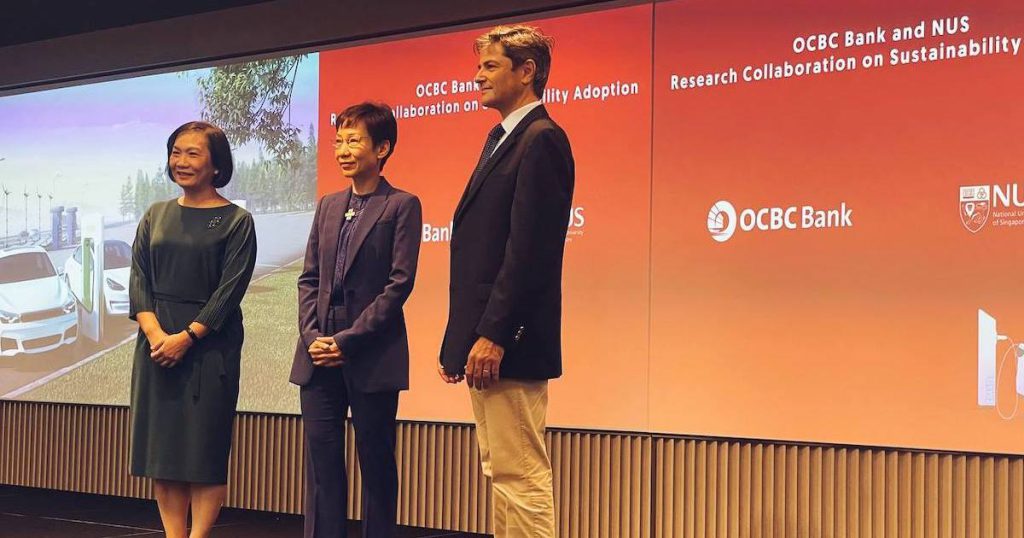
The Singapore Green Plan 2030 is driving sustainability full-force across the various industries in Singapore, and everyone has a part to play in achieving this national sustainability agenda.
As part of its OCBC Sustainability Day programme, OCBC Group’s Chief Executive Officer (CEO), Helen Wong, delivered a speech today (August 18) to address the bank’s commitment towards sustainability and climate action.
She announced that OCBC has partnered with the National University of Singapore (NUS) on a series of sustainability research, starting off with a study on the adoption of electric vehicles (EVs).
The overall research hones in on the decarbonisation of urban travel — one of the key features of the Sustainable Living pillar — and will be led by Associate Professor Alberto Salvo, Deputy Head of Research at NUS Department of Economics and a leading sustainability expert.
Finding out what will make Singaporeans switch to EVs

The collaboration between NUS and OCBC marks the start of the nation’s largest dedicated study to understand the most effective way for Singaporeans to adopt EVs.
32,000 OCBC Bank customers will contribute to the study — which is expected to stretch across three months — and will be selected on the basis of having a high likelihood of replacing their cars in the coming years.
NUS and OCBC aim to uncover the concerns that consumers have about making the switch to EVs, be it concerns over cost of EV ownership in the long-run, or climate-damaging carbon emission levels of petrol and diesel vehicles.
Persuasiveness of the different factors will be gauged by studying the anonymised data retrieved from the participants. These factors include transit spending, fuel purchases on OCBC cards, and EV transition rate.
Said findings will further help businesses and organisations accelerate consumers’ adoption of EVs and other green practices. It also aims to support Singapore’s current push to electrify its vehicle population by phasing out petrol and diesel vehicles by 2040.
Once the study is concluded and results analysed, a research paper will be released in the second quarter of 2023.
“Only by understanding what makes consumers tick, and which factors really tip the scale for them in favour of electric vehicles, can we effectively encourage our customers to go green,” said Sunny Quek, Head of Consumer Financial Services Singapore, OCBC Bank.
Minister for Sustainability and Environment, Ms Grace Fu supported the collaboration between NUS and OCBC stating that it is a combination of strengths that complement each other, further strengthening the research outcome.
“Partnerships and collaborations are needed in climate action as global warming and resource depletion are complex wicked problems that no country or company can solve on its own,”
Minister for Sustainability and Environment, Ms Grace Fu
Setting an example to push for a greener future
Minister Fu elaborated on the efforts of the Singapore government in pushing towards a greener future.
“To nudge the transition to a low-carbon future, we will be raising the carbon tax progressively to provide a clear price signal for businesses and individuals to internalise the costs of carbon, encourage the adoption of technology, and steer action towards more sustainable practices.”
She mentions how the carbon tax revenue will be used to support the transition to a greener economy through incentivising low-carbon solutions, as well as act as a cushion for the transitional impact businesses and households may face.
OCBC has also long made a concerted effort to launch sustainable products and services. These include green investment products, as well as OCBC ‘Eco-Care’ home, renovation, and car loans.
The bank first launched its enhanced electric vehicle loan ‘Eco-Care’ in March 2021, and has seen its take-up rate double so far. It expects the overall OCBC ‘Eco-Care’ care loan business to achieve growth of more than 250 per cent by end of the year due to the surge of demand and interest in EVs.
Its work with NUS will also add value to OCBC’s services, allowing them to further refine and tailor its green products to make them more attractive to customers.
The bank also recently announced a strategic partnership with Charge+, an operator and provider of EV charging solutions, to boost the latter’s plans of installing 10,000 EV charging points islandwide by 2030.
As a bank, OCBC is resolute in our commitment to sustainability and climate action. At last year’s COP26, sustainable finance was one of the key areas of focus. For OCBC, it is definitely high on our sustainability agenda. Since then, our sustainability financing commitments have grown to S$37 billion, putting us in a very good position to achieve our S$50 billion target by 2025.
– Helen Wong, Chief Executive Officer, OCBC Group
Wong expresses the importance of a community-effort in the ‘Race to Zero’. OCBC’s own efforts go beyond sustainable finance, and it it’s on track to achieve carbon neutrality by the end of 2022 for its own operational emissions.
In the wider ecosystem, OCBC also supports Singapore’s national sustainability agenda through its partnerships with NParks on the OCBC Arboretum and its #OCBCCares Fund for the Environment.
As part of its OCBC Sustainability Day programme, the keynote is also supported by three exhibition booths showcasing different aspects of sustainability.
“Along with our OCBC Sustainability Innovation Challenge and working with our partners, we hope to sponsor the development of many innovative green solutions in the region which can make a lasting positive impact for the environment,” Wong concludes.
Featured Image Credit: Vulcan Post
Also Read: S’pore firm EVOne charges ahead to solve EV needs – clients include DHL, NUS, bus operators
Grab, foodpanda, Deliveroo launch food delivery association in S’pore to improve gig economy

Grab, foodpanda and Deliveroo announced today (August 18) that they have jointly launched the Digital Platforms Industry Association (DPIA), which seeks to enhance support for both delivery staff and merchants.
The association focuses on improving frameworks, guidelines and policies, while collaborating with the government and industry stakeholders.
“It will create solutions that reflect the voices of its delivery partners and merchants, both of whom are core to platform companies’ operations,” according to a joint media statement.
In other words, the association will pave the way for its members to adopt their code of practice that embodies the industry’s best practices. This way, principles related to the health and safety of both delivery staff and merchants can be ensured.
“For platform companies, the well-being of our delivery partners and merchants across the marketplace is paramount. That’s why DPIA was established – to consolidate the deep industry expertise of platforms and shape the development and growth of the industry within Singapore’s national economy,” said the companies.
The increased relevance of delivery platforms

Singapore and the rest of the world have seen an increase in the number of people using delivery platforms, propelled by COVID-19.
“Globally, the food delivery industry has grown rapidly, rising to a peak in public consciousness during the pandemic. It is today both an essential service and an exciting new economic sector,” said the three companies.
They added that with the food and beverage industry turning to food delivery platforms to generate additional revenue, delivery riders are able to earn from flexible working hours. They also strongly believe that such delivery platforms will continue to drive Singapore’s digital economy.
Putting delivery staff and merchants first
To provide the best for delivery staff and merchants, the association plans to leverage on the expertise and experiences each company has to provide better opportunities for delivery staff and merchants to grow.
In line with their efforts to support Singapore’s digital economy, the association will provide upskilling opportunities in addition to strengthening the existing health and safety standards for delivery staff and merchants.
In fact, the DPIA members have already started contributing to the consultation process with multiple government stakeholders, the National Delivery Champions Association and other industry stakeholders since 2021 to better support gig workers.
In particular, road safety has been a key area of focus, with the DPIA working with the Workplace Safety and Health Council on guidelines for platforms and employers to strengthen road safety practices, especially among their delivery partners.
With these plans in place, the DPIA seeks to better serve delivery partners and merchants.
Featured Image Credit: 24Talker
Also Read: Coriander gelato to mala waffles: This ex-foodpanda rider invested S$100K into his dessert cafe
S’pore fintech firm FOMO Pay raises US$13M to fuel business growth and explore CBDC projects
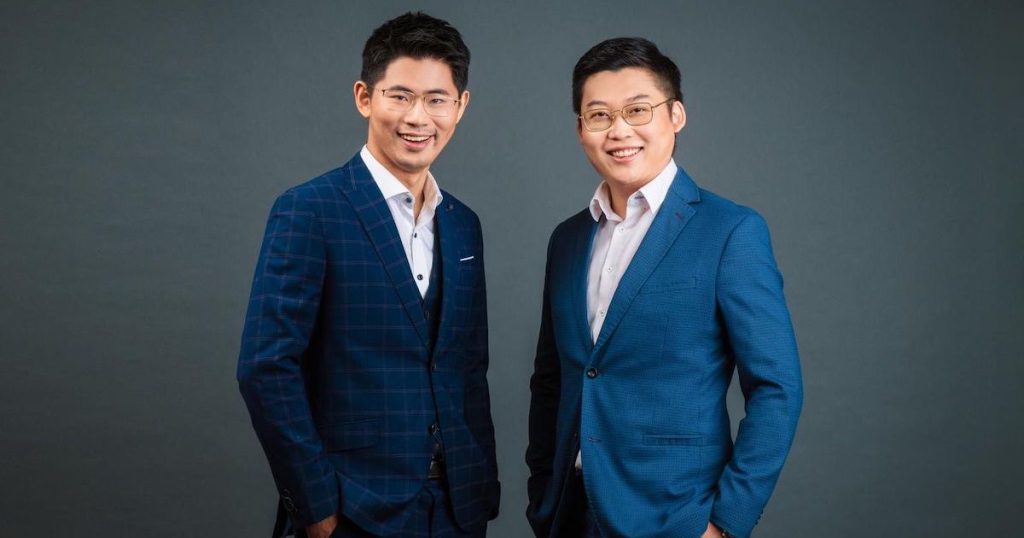
Singapore-based fintech firm FOMO Pay announced today (August 18) that it has raised US$13 million funding in its Series A round led by Jump Crypto.
Other participating investors include HashKey Capital, Antalpha Ventures, Ab Initio Capital and Republic Capital.
With the injection of fresh funds, the firm said that it will accelerate its growth. Specifically, it’s looking to invest in talent acquisition and its infrastructure, as well as strengthen its research and development capabilities.
After all, FOMO Pay’s mission is to be the leading global banking service provider for the fast-growing digital economy. In line with this, it aims to extend its client base to embrace digital payments and accelerate digital adoption.
It is also looking to diversify product offerings following the strong crypto adoption, and this includes working closely with regulators on Central Bank Digital Currency (CBDC) projects.
Additionally, it is also eyeing geographic expansion with a first-mover advantage on license and compliance into other jurisdictions.
2022 has so far been a breakout year for FOMO Pay – we are seeing significant growth across all business lines. Our volumes for the first half of 2022 have already surpassed the full year 2021 levels and our client pipeline is extremely strong. We attribute this success to the hard work of our team and their effort to always put customers first.
This is a milestone year for us as we turn eight years old. We will continue to strive hard towards building Asia’s first licensed payment ecosystem with interoperability between fiat and crypto currencies, and we are grateful to the unwavering support and belief from our investors, stakeholders and partners.
– Louis Liu, founder and CEO of FOMO Pay
FOMO Pay was the first firm in Singapore that was granted approval by the Monetary Authority of Singapore (MAS) for Digital Payment Token (DPT) Services. It is also the first DPT licensee to offer crypto payment solution for Singapore retailers.
Founded in 2015, FOMO Pay is a homegrown fintech company offering its flagship solutions by helping institutional clients connect to e-wallets, credit cards, cryptocurrencies, and more with its global banking solutions.
Today, FOMO Pay is one of the largest digital payment and banking solution providers, servicing several thousands of clients across Web2 and Web3 industries.
Featured Image Credit: FOMO Pay
Also Read: FOMO Pay becomes first DPT licensee to offer crypto payment solution for S’pore retailers
Coriander gelato to mala waffles: This ex-foodpanda rider invested S$100K into his dessert cafe
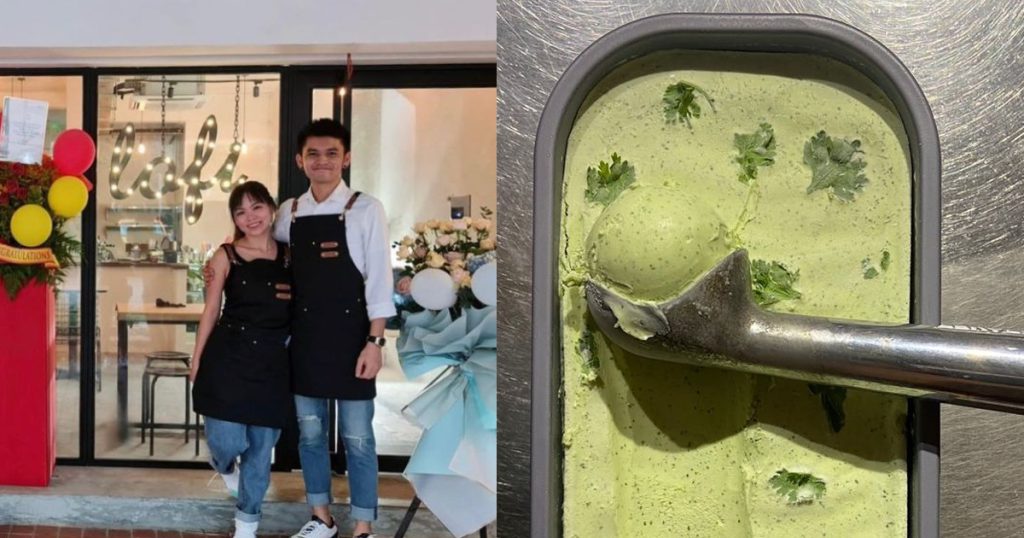
Starting a business isn’t an easy journey. It was extra challenging for 27-year-old Bryan Liew, who launched his dessert cafe LoFi Bar at the height of the pandemic, with no prior food and beverage (F&B) experience.
He had graduated with a dual degree in Digital Marketing — one from Malaysia, and another from the UK. He started out his career as a Retail Marketer in 2017 before climbing the ladder to take up the role of a Senior Operations Manager, and eventually quit his job on the first day of the ‘circuit breaker’ lockdown.
I noticed no matter how advanced technology is, or how busy a person is, everyone still needs to have a proper meal. Despite my background in the digital sector, I saw an opportunity in the F&B industry, [so I] quit my 9-to-5 job and gave it a shot.
– Bryan Liew, founder of LoFi Bar
He stepped away from the digital marketing sector and began his stint as a foodpanda rider with an aim to experience more of Singapore’s food culture, using it as a platform to frequent hawker centres and eateries in lesser known areas. This experience also propelled him to establish his own cafe.
Why make coriander ice cream?
Located at Hougang area, LoFi Bar was established in April 2021, a month before ‘circuit breaker’ started.
Bryan’s purpose behind launching his cafe was simple: to fulfil Singaporeans’ habit of “eating and hunting for food” during the COVID-19 pandemic.
To create a feel-good concept, Bryan plays LoFi music in the cafe — hence the name — to help his customers relax. He also combined it with Singaporeans’ love for dessert, launching only waffles, gelato, and coffee as part of the menu.
When the lockdown happened, Bryan reverted to his digital marketing skills and dug deep into consumer research to find out what he could do to attract more customers. One strategy was innovating the menu with unique food like coriander gelato and mala waffles.

Our coriander gelato was just a fun idea. I was just asking a friend what’s their favourite flavour of ice cream, and one of them jokingly said coriander. I took it personally, and felt it could be something that would go viral. It could also turn into a unique selling point (USP) for LoFi, especially since we were new and looking to create a presence.
– Bryan Liew, founder of LoFi Bar
The cafe’s Mala Chicken Waffle was part of its menu expansion — sweet, spicy, and savoury all in one bite. However, the coriander gelato still stands as its best-selling menu item today, with customers travelling from as far as Jurong to try it.
Using past experiences to overcome obstacles

Bryan’s lack of F&B experience was one of his key challenges when establishing LoFi. Most of his time and effort went into research and learning on-the-job. He would conduct a survey with every walk-in customer, and take into consideration all their feedback.
“My latte art, for example, I only had one week of practice before LoFi’s launch. In the beginning, I had to apologise to customers for the poor art. But if you’re doing the same thing everyday, it only gets better. The only way is up,” he reflected.
The next obstacle for him was being the newcomer in the neighbourhood. During COVID, LoFi was significantly affected by the dine-in restrictions — it happened twice within the span of four months.
He knew that his cafe could not rely solely on foot traffic, and that he needed the help of food delivery platforms to boost their sales. After all, the pandemic had brought about a shift in consumer behaviour, with food delivery becoming the new norm.
There was a day when we opened for a whole day, and there was only one customer. The ringing sound from foodpanda was the one and only thing we were waiting for, [and] food delivery sales back then were enough to cover our daily expenses.
– Bryan Liew, founder of LoFi Bar
Drawing from his own personal experience as a former foodpanda rider, he understood the difficulties faced by riders and decided to make food collections at his cafe as seamless as possible. Food delivery orders are given a priority, and all orders — especially those with drinks — are packed well to prevent spillage during travel.
A never-ending growing process
The most common question Bryan gets to date is why he launched a business during the pandemic.
Like the old saying goes: start a business when we’re young [and] have nothing to lose. I saw the opportunity and decided to go for it. I never doubt myself — I always go all out when I want to do or achieve something; even if it fails, at least I tried.
– Bryan Liew, founder of LoFi Bar

Bryan had invested around S$100,000 into the business so far. The early days was especially hard for their bottomline, especially with the tight COVID restrictions then.
In fact, LoFi’s worst-performing month was during the first ‘no dine-in’ period in June 2021. Back then, its sales weren’t even enough to cover its rental fees. Although the business is still not yet profitable, Bryan found it encouraging that its sales figure has skyrocketed to 300 per cent thus far.
Over time, he trusts that LoFi’s brand awareness will continue to grow and reach bigger audiences, and eventually expand. Moving forward, Bryan hopes to be able to find someone who is able to replicate what he does for the business in order to bring LoFi to the next level.
“I have only two hands and limited capabilities. If I’m able to find a passionate candidate, I’ll definitely expand. This could be to open new stores, to franchise LoFi, or even supply to big players or supermarkets,” shared Bryan.
“LoFi is still very new. I don’t want to look too far. I just want to focus on this moment, bring more smiles to those who visit, and leave everything else to fate.”
Feature Image Credit: LoFi Bar
Also Read: Casino gaming to farming: This S’porean grows greens for a living, supplies to over 50 stores
ASUS proves that a good laptop does not need to be overpriced, here’s how
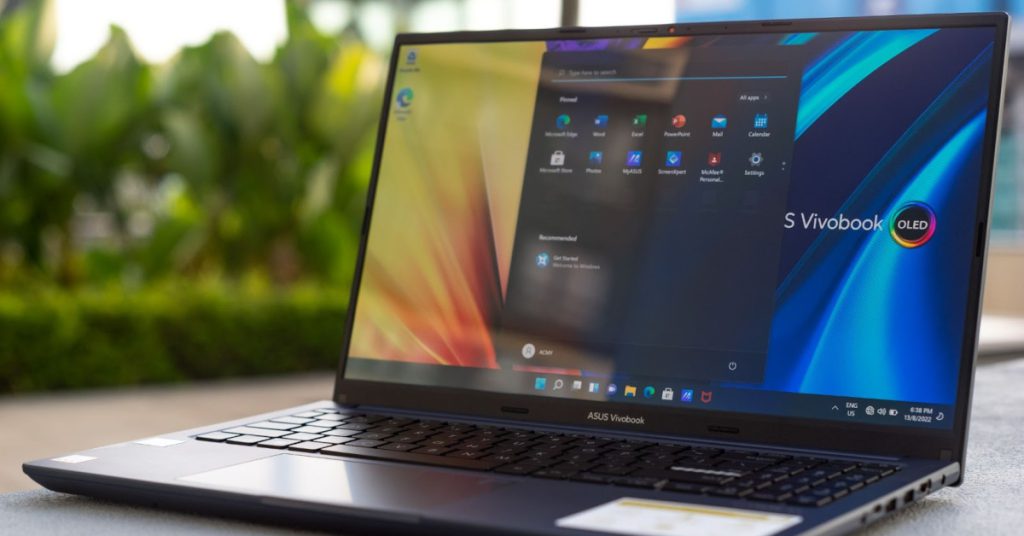
[This is a sponsored article with ASUS.]
When scouring the market for a laptop as your daily driver, there are several to choose from with prices ranging from as low as RM1,500, up to, or even more than, RM15,000.
Of course, the more expensive a laptop is, the more likely it will come with better features and performance. But after a certain point, spending more might just give you marginal gains over a laptop that’s slightly more affordable.
This begs the question, does getting a capable and feature-filled laptop need to be expensive? ASUS doesn’t think so, and their new ASUS Vivobook 15X OLED is a testament to that. Here’s why.
What is ASUS’ Vivobook series?
The Vivobook series is ASUS’ mainstream laptop lineup that’s suitable for all kinds of productivity workloads, be it at school or work.

It’s also centred around providing value for your money, as they’re usually equipped with decent tech specs and sleek designs, yet are lightweight enough for them to be carried around.
This makes the series ideal for young working professionals, students, casual gamers, and content creators alike.
What does the Vivobook 15X OLED have?
From the price of RM3,299, one of the ASUS Vivobook 15X OLED’s standout features includes the 15.6-inch 2.8K resolution 120Hz OLED Pantone-validated display, which provides good colour production for colour-accurate workloads.
The fact that it has a high refresh rate display makes the gaming and user experience much smoother, too.
Also, the display has a 0.2 millisecond pixel response time, which drastically reduces motion blur in order to produce the crispest image possible.
Around this price point, some laptops are usually only equipped with either a high refresh-rate display, or a high resolution OLED display, but typically not both.

Unless you’re getting a rather expensive laptop, you’d also usually have to pick one that strikes the right balance between design, performance, weight, and features.
The ASUS Vivobook 15X OLED not only weighs in at 1.7kg and has a sleek looking design, but it’s also equipped with up to a Ryzen 7 5800H paired with integrated graphics, which is more than enough for most general workloads like word processing, and light video and photo editing.
Because of that, the laptop, along with it’s nearly 14 hour battery life, is suitable for remote working professionals and students that are constantly out and about. You can find the full tech specs for the laptop at the bottom of this article.
When it comes to working on the go, there will be occasions where you find yourself placing the computer on your lap.
If the laptop does not have a hinge that can be tilted all the way back, you may need to hunch over just to see the screen more clearly, which can get quite uncomfortable especially if you’re a taller individual.
That said, it has a hinge that can open up to 180 degrees, allowing you to work more comfortably while travelling. It can also be laid flat on the table so that everyone can have a look at what’s being presented.

While the usual security features are in place, a fingerprint sensor that’s located on the top right of the touchpad lets you quickly and securely access your laptop via the Windows Hello feature.
Since laptops are one of the electronics where you would find the most bacteria, the ASUS Vivobook 15X OLED comes with the ASUS Antibacterial Guard, which claims to help remove up to 99% of bacteria on the laptop’s surface after 24 hours.
But for good measure, it’s always a good practice to sanitise your laptop frequently to inhibit bacterial growth.

Furthermore, if you find yourself needing to join a work call but don’t have a dedicated microphone on hand, ASUS shipped the Vivobook 15X OLED with the ASUS AI Noise Cancellation feature.
It helps cut down on unwanted noise, thus, participants can hear you more clearly.
-//-
If you’re looking for a laptop for your studies, work, or content creation, the RM3,299 Vivobook 15X OLED (M1503) with Ryzen 5 5600H might be a suitable candidate for the value it provides.
However, if you need a processor that’s stronger, you can opt for the slightly more expensive variant at RM3,699 that’s equipped with the Ryzen 7 5800H. Of course, you can add additional RAM for better performance and responsiveness, too.
| Processor | – Ryzen 5 5600H – Ryzen 7 5800H |
| Storage | – 8GB RAM (Expandable) – 512GB M.2 NVMe PCIe 3.0 SSD (Expandable) |
| Display | – 15.6-inch 2.8K (2880 x 1620) 16:9 aspect ratio OLED display – HDR – 3-sided NanoEdge design – Up to 600 nits peak brightness – Pantone validated – VESA-certified Display HDR True Black 600 – TÜV Rheinland flicker free and low blue light hardware certified – Capable of displaying up to 1.07 billion colours – 100% DCI-P3 – 133% sRGB |
| Graphics Processor | – Radeon Integrated Graphics |
| Connectivity | – Wi-Fi 6 (Dual band) – Bluetooth 5 |
| I/O | – 1x USB 2.0 Type-A – 1x USB 3.2 Gen 1 Type-C – 2x USB 3.2 Gen 1 Type-A – 1x HDMI 1.4 – 1x 3.5mm Combo Audio Jack – 1x DC-in |
| Weight | – 1.7kg |
| Dimensions | – 356.8 x 227.6 x 199mm |
| Features | – US MIL-STD 810H military-grade standard – ASUS ErgoSense keyboard – Fingerprint sensor – 180-degree hinge – ASUS Antibacterial Guard – ASUS AI Noise cancelation – Physical webcam shield |

Also Read: Here’s a M’sian XR summit aiming to fill workforce gaps in metaverse-related industries
Huawei’s P50 Pocket is stunning, but here are the pros and cons of the phone
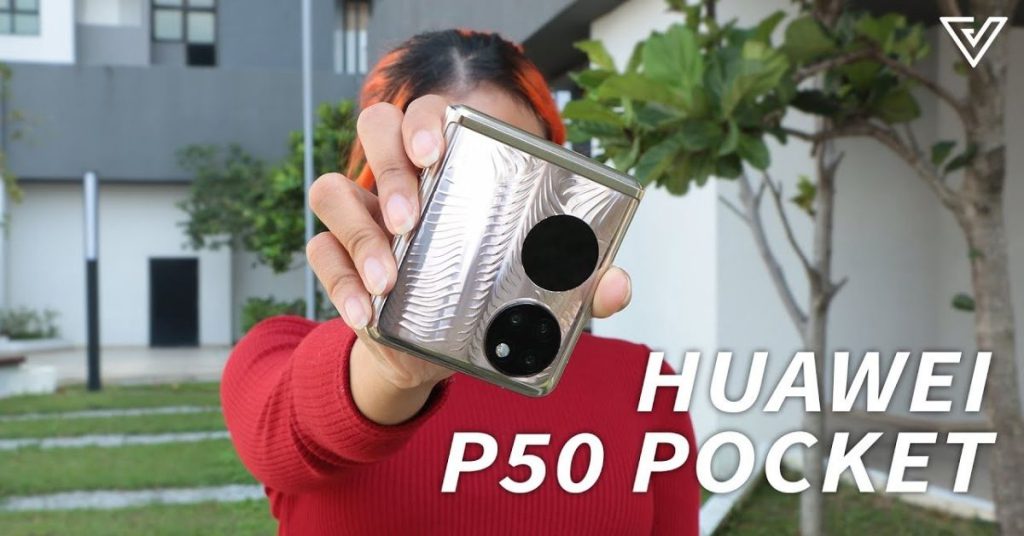
TLDR: Full video review available below!
The market for phones that fold is starting to become more than a gimmick. With Samsung popularising the clamshell-style foldables via the first Galaxy Z Flip and later the Z Flip3, Huawei joined the current competition with its P50 Pocket.
Beyond its flashy exterior, we discovered some noteworthy features of the phone. Though, not everything ended up in our good books. Here are the pros and cons of the Huawei P50 Pocket.
Pro #1: It’s BEAUTIFUL
Its exterior design reminded us of a compact makeup powder, giving the phone a feminine and luxurious feel.
The Premium Edition’s exterior case which we got was designed by a Dutch fashion designer, Iris van Herpen. She’s known for fusing technology with traditional haute couture craftsmanship.

By the way, haute couture is a legally protected term. Only 14 designers and fashion houses globally have been granted that designation by the French Ministry of Industry.
So for an haute couture designer to be part of this collaboration, that’s a pretty big deal for Huawei and the fashion design industry.
What Huawei did right on the P50 Pocket is its seamless folding form. When it’s folded, it’s closed shut with no gaps in between.

For perspective, the Samsung Z Flip3 suffered from something we like to call a “thigh gap” when shut, meaning there was an awkward empty space by the hinge where dust or other small objects could get in between, leading to scratches.
To add, the P50 Pocket’s screen crease is a lot less noticeable than the Z Flip3’s when the phone is opened fully.
Pro #2: Bigger storage and battery
The P50 Pocket we received had 12GB of RAM, and 512GB of storage. That’s almost double the size of the Z Flip3’s specs.
Another plus for Huawei’s smartphone is the additional external memory slot that the Z Flip3 doesn’t have.
Huawei’s foldable has a Snapdragon processor, 4,000mAh battery, and runs Huawei’s Harmony OS 2.
When it unfolds, you’ll be looking at an OLED screen display and can experience a buttery-smooth interaction with its 120Hz refresh rate.
While this is something the Z Flip3 has as well, its small battery capacity of 3,300mAh deterred us from enjoying such a high refresh rate without draining its battery life so quickly (our six-month review here).
So, the P50 Pocket with its 4,000mAh battery is a welcome addition.
Pro #3: Great cameras
Because it’s Huawei, good cameras are to be expected. The P50 Pocket is equipped with four cameras: Three at the back and one in front.
They can’t be compared to what the P50 Pro is capable of, but when compared to the Z Flip3, Huawei’s cameras absolutely shine.

There aren’t many clamshell phones on the market yet, but Huawei’s P50 Pocket camera seems to offer the highest megapixel as of now.
Thus, you’ll be able to take some great selfies or group photos with this beauty.
Although, the P50 Pocket’s cameras still come with some shortcomings. In Aperture or Portrait mode, for example, the artificial background blurring can underperform and blur out parts of the object that should be focused on.
But we wouldn’t necessarily fault the phone too much, because most phone camera software that uses AI to achieve the bokeh or portrait look tend to suffer from wonky blurrings every now and then.
Here’s where we actually get into some of the phone’s real shortcomings that matter for usability.
Con #1: No Google Mobile Services (GMS)
The lack of GMS on Huawei phones is still a thorn in the brand’s side, and the P50 Pocket suffers too.
Huawei has tried its best with Huawei Mobile Services (HMS), but the fact is, it’s not enough for those whose life, work, and entertainment depends on Google.
Even though we were able to install YouTube and Facebook through a third-party app, we’re still unable to access them.
Other well-known apps like Firefox, Netflix, and Waze are not available in the Huawei AppGallery.
Con #2: It lacks a backbone
The Samsung Z Flip3 allows you to kickstand the phone at 90 degrees, helping it function as a tripod when taking photos.
However, the Huawei P50 Pocket flops back down on a flat surface. So it either snaps fully open or fully closed, unless you’re keeping it open at around a 90-degree angle.

This is ok if you can easily flip it open with one hand, because then it’s like the classic and iconic Motorola Razr. But in this case, you can’t do that, as it really depends on the size of your hand.
Con #3: No water, dust, or scratch resistance
If you’re particular about the smudging on the screen and the exterior of your phone, the P50 Pocket requires a lot of cleaning.
Because of its material, smudges of fingerprints and dust can be seen easily on the case. It also does not have a water-resistant rating.
The lack of gorilla glass for the exterior and interior is missing from this luxurious phone too. Gorilla glass was invented to prevent screen breakage and on some ratings, it is scratch-proof as well.
Hence, the phone can be extremely fragile if you’re not careful.
-//-
For its expensive price as a flagship phone at a whopping RM7,299 (for the Gold P50 Pocket designed by Iris van Herpen), it offers great cameras, storage capacity, and was designed by an haute couture icon.
There’s also a White version costing RM5,999, but it’s still a steep price tag to pay.
Just beware that you will lose access to well-known apps, and you’ve got to handle it with extra care.
What we’ve mentioned are just a few of the many features this smartphone has to offer, so to fully see the Huawei P50 Pocket in action, check out the video below:
Also Read: Vulcan Post Explores: Interesting places in Cyberjaya that aren’t just about business
